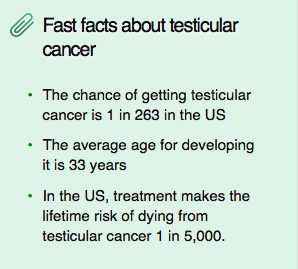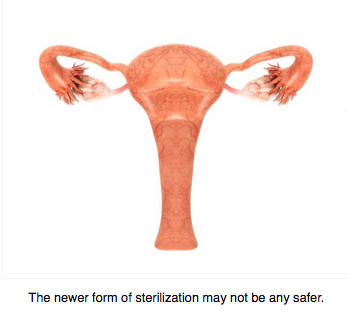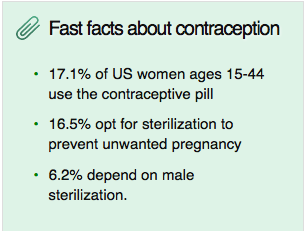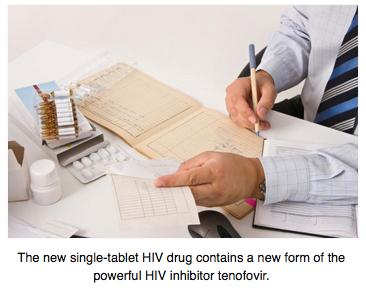
 |
|
#16
|
||||
|
||||
|
Re: Sexual Health News
Ebola virus found in semen 9 months after symptom onset
http://www.medicalnewstoday.com/articles/301057.php The Ebola outbreak that nearly bested the global health care community in March 2014 has remained a major focus for scientists and researchers, as preventing further spread of the disease has been a prime target. Now, a new study suggests that the virus is still detectable in semen samples from male survivors for at least 9 months after onset of symptoms. The study is published in the New England Journal of Medicine and shows preliminary results of a long-term study conducted by the Sierra Leone Ministry of Health and Sanitation, the World Health Organization (WHO) and the US Centers for Disease Control and Prevention (CDC). According to the researchers, the number of new cases of Ebola virus disease (EVD) has declined in Western Africa from a high of 1,063 cases during the week of October 9, 2014, to fewer than 10 cases each week for 11 straight weeks as of October 7, 2015. They note that, though rare, suspected cases of sexual transmission of EVD have been reported, which is why they are further investigating the topic. In 1967, there was a confirmed case of sexual transmission of the related Marburg filovirus from a male survivor to a female partner, supporting the view that Ebola can be passed through semen. The main source of transmission of Ebola is through direct contact with the body or bodily fluids of a person with the virus - or from the body of a person who died from it. The researchers note, however, that EVD can persist in the bodily fluids of survivors during recovery, which could result in transmission. 'Further evidence survivors need continued support' As part of the study, a total of 93 men aged 18 or over in Freetown, Sierra Leone, submitted semen samples that were tested for the presence of EVD genetic material. These men enrolled in the study between 2-10 months after their symptoms began. Fast facts about EVD The average EVD fatality rate is around 50% First outbreaks occurred in remote villages in Central Africa The recent 2014 outbreak in West Africa involved major urban and rural areas, with cases traveling to other parts of the world. Of the men who were tested during the first 3 months of their illness, 100% tested positive for presence of EVD in their semen; of the men who were tested between 4-6 months after symptoms began, 65% tested positive. Results also showed that 26% of the men tested between 7-9 months after their illness began had semen that tested positive for EVD. The researchers say it is unclear as to why some study participants had cleared remnants of the virus from semen earlier than others, but the CDC are carrying out further tests of the samples to establish whether the virus is live and possibly infectious. "These results come at a critically important time," says WHO's Bruce Aylward, "reminding us that while Ebola case numbers continue to plummet, Ebola survivors and their families continue to struggle with the effects of the disease." He continues: Quote:
Safe sex and Ebola The researchers note that until more is known, the thousands of male Ebola survivors need education, counseling and regular testing so they know if the virus remains in their semen. During this time, WHO have issued some recommendations, including: -Ebola survivors should be issued with condoms -Survivors and their sexual partners should either abstain from all types of sex or observe safe sex until their semen has tested negative two times -Until their semen has twice tested negative, survivors and partners should immediately wash their hands with soap and water after any physical contact with semen - including after masturbation. The recommendations also advise that "all survivors, their partners and families should be shown respect, dignity and compassion." Yusuf Kabba, national president of the Sierra Leone Association of Ebola Survivors, says that the "EVD survivors who volunteered for this study are doing something good for themselves and their families and are continuing to contribute to the fight against Ebola and our knowledge about this disease." |
|
#17
|
|||
|
|||
|
Re: Sexual Health News
About 3.7 billion worldwide are infected with the herpes virus
http://mashable.com/2015/10/28/billi...k#8H2Eb4TUUmqb |
|
#18
|
||||
|
||||
|
Re: Sexual Health News
Quote:

|
|
#19
|
||||
|
||||
|
Re: Sexual Health News
New test could make chemo unnecessary for many with testicular cancer
http://www.medicalnewstoday.com/articles/301153.php  Quote:
Testicular germ cell tumors are the most common solid malignant tumor in young Caucasian men. Patients diagnosed with disease in the early stages face a choice between monitoring with treatment, if relapse occurs, or moving directly on to chemotherapy with its associated long-term side effects. Predicting who does or does not need chemotherapy is important in order to minimize treatment, with its undesirable side effects. The new test could be used in clinics to make decisions about which patients should be given chemotherapy. Scientists at The Institute of Cancer Research in the UK analyzed 177 tumor samples from patients with stage 1 non-seminomatous tumors, enrolled in clinical trials through the Medical Research Council (MRC) Clinical Trials Unit. 94.3% of patients in low-risk group did not relapse They found that three different features of the tumors were important indicators of relapse risk: The levels of a molecule called CXCL12 The percentage of the tumor with an appearance of cancer stem cells Whether or not blood vessels were present in the tumor. They scored tumors based on these features, and found that by combining scores, they could divide patients up into three different risk groups based on how likely patients were to suffer a relapse of the disease within 2 years. It is rare for a patient to relapse from testicular cancer beyond this time. The vast majority of patients were in the low-risk group: 94.3% did not relapse in 2 years. In the moderate-risk group, 65.9% did not relapse. Strikingly, only 30% of patients did not relapse in the high-risk group. The tests were validated in an additional group of 80 patients at the UK's The Royal Marsden Hospital. Study leader Prof. Janet Shipley explains that the test will be able to detect who really needs chemotherapy. Chemotherapy is extremely effective in treating testicular cancer, but can have long-term consequences for a patient's health and well-being. Long-term effects include cardiovascular disease, second malignancies, Reynaud's syndrome, neuropathies, fertility and emotional disorders. Minimizing exposure to chemotherapy is especially important in testicular cancer, as they can affect young adults for decades. Now, low-risk patients could simply be monitored and potentially avoid chemotherapy and its side effects. The researchers would now like to test this prognostic index in larger groups of men, with a view to protecting future quality of life in what is, essentially, a curable disease. |
|
#20
|
|||
|
|||
|
3.7 Billion--Wow! No think about how much money the drug companies make treating this problem!!! Do we really have to wonder why they haven't found, or released, a "CURE".??
|
|
#21
|
||||
|
||||
|
Re: Sexual Health News
Quote:
Anyone who has had chickenpox already has a strain of Herpes which cannot be cured.
__________________
Tips for ALL samsters.
|
|
#22
|
||||
|
||||
|
Re: Sexual Health News
Fears that sterilization procedure is unsafe
http://www.medicalnewstoday.com/articles/300921.php  Patients undergoing hysteroscopic sterilization have a far higher risk of undergoing reoperation compared with patients undergoing laparoscopic sterilization, according to research published in The BMJ. The benefits and risks of both procedures should be discussed with patients to help them decide on the best option, conclude the team from Cornell University in Ithaca, NY. Female sterilization is one of the most commonly used methods of contraception globally, and is used by over 10 million women of reproductive age in the US. Laparoscopic sterilization has been the primary method of sterilization for decades. It is a surgical procedure that clips, stitches or burns the fallopian tubes to prevent pregnancy, and requires general anesthetic. Hysteroscopic sterilization was developed more recently as a less invasive alternative; it involves implanting the "Essure" device to block the fallopian tubes. It does not require general anesthetic or surgery. Approved, but is it safe?  The Essure device received approval in Europe in 2001 and was approved by the US Food and Drug Administration (FDA) in 2002. Its safety has been considered to be similar or superior to that of laparoscopic sterilization. It is used in North America, Europe, Australia, New Zealand, Central and South America and the Middle East. However, a number of problems have been reported following the hysteroscopic approach. The procedure has a 3-month post-procedure waiting period before sterilization becomes effective. Reports have also associated it with a higher risk of unintended pregnancy. Other reported complications related to the device have included pelvic pain, hemorrhage and device migration or incompatibility, necessitating reoperation. After thousands of concerns were received by the FDA, the device failure became a subject of litigation in 2014. No randomized controlled trial or large comparative cohort study had been conducted to compare the efficacy and safety of hysteroscopic and laparoscopic sterilization. The researchers therefore carried out the study to compare the performance, safety and other outcomes of the two procedures. They also conducted sub-group analyses by age and important risk factors. Using statewide and all-inclusive population data, they analyzed information on 8,048 women who underwent hysteroscopic sterilization and 44,278 who underwent laparoscopic sterilization in outpatient settings between 2005 and 2013 in the New York State. Increased risk of reoperation and complications They looked at complications within 30 days of the initial sterilization procedure and investigated unintended pregnancies and reoperation up to 3 years after the initial sterilization procedure. They found that both methods have a similar risk of unintended pregnancy, but the risk of reoperation associated with hysteroscopic sterilization is more than 10 times higher - the equivalent to around 21 additional reoperations per 1,000 patients undergoing surgery. The authors warn that this is a "serious safety concern." The likelihood of reoperation was eight times higher at 2 years after the initial operation and six times higher after 3 years. Women who underwent hysteroscopic sterilization were more likely to be over 40 years old and have a history of pelvic inflammatory disease and cesarean section. Nevertheless, the higher risk of reoperation persisted in the various age groups and women with history of pelvic inflammatory disease. The overall risk of unintended pregnancy for both groups was comparable; with the Essure device it was approximately 1 in 100, which is higher than reported in previous studies. The authors also found that as the laparoscopic procedure has declined in popularity, the hysteroscopic procedure has become more common. The use of laparoscopic sterilization decreased from 7,852 cases in 2005 to 3517 cases in 2013, while the use of hysteroscopic sterilization significantly increased from 45 cases in 2005 to 1,231 cases in 2013. The authors comment: Quote:
Limitations of the study include the fact that, being an observational study, some unmeasured factors may have influenced the relationship between use of the Essure device and the increased risk of reoperation. |
|
#23
|
||||
|
||||
|
Re: Sexual Health News
My erection won't go down. What shall I do???

__________________
Tips for ALL samsters.
|
|
#24
|
||||
|
||||
|
Re: Sexual Health News
Don't log in.Log out

__________________
Click here for my latest post to return Up.Thanks!    F **king Retarded/Scumbag Guy In My Ignore List |
|
#25
|
||||
|
||||
|
Re: Sexual Health News
New single-tablet HIV treatment wins FDA approval
http://www.medicalnewstoday.com/articles/302153.php  The US Food and Drug Administration have approved a new single tablet as a complete treatment for the treatment of HIV-1 infection in people aged 12 years and over. The new treatment, called Genvoya, from Gilead Sciences, is a fixed-dose combination of elvitegravir, cobicistat, emtricitabine and tenofovir alafenamide. It is intended for patients aged 12 and over, weighing at least 35 kg (77 lbs) and who have never been treated for HIV before, or for infected adults whose HIV is currently suppressed. The drug was tested against other HIV treatments approved by the Food and Drug Administration (FDA) in four clinical trials involving a total of 3,171 participants. Results showed that it reduced viral loads and was comparable to other treatments. Genvoya contains a new version of tenofovir - a powerful HIV inhibitor - that has not been approved before. Gilead say that because the new version (called TAF) enters cells - including HIV-infected cells - more efficiently than the previous version (TDF), it can be given at a lower dose that results in 91% less tenofovir in the bloodstream. The new drug was developed to reduce side effects, and the trial results show it appears to be associated with less kidney toxicity and reductions in bone density than previously approved drugs containing tenofovir. Suitable for patients with moderate kidney impairment The FDA note that while Genvoya is not recommended for patients with severe kidney impairment, those with moderate impairment can take Genvoya. However, the US regulator also comments that "patients receiving Genvoya experienced greater increases in serum lipids (total cholesterol and low-density lipoprotein) than patients receiving other treatment regimens in the studies." The drug's Boxed Warning says it can cause lactic acid to build up in the blood and lead to severe liver problems, both of which can be fatal. The most common side effect is nausea, and serious side effects include new or worsening kidney problems, reduced bone mineral density, fat redistribution and changes in the immune system. The warning also says Genvoya should not be given with other antiretroviral drugs and may interact with a number of commonly used medications. Dr. Edward Cox, director of antimicrobial products in the Center for Drug Evaluation and Research at the FDA, said on Thursday: Quote:
HIV-1 is the predominant strain of HIV that causes the vast majority of HIV infections worldwide. When people refer to HIV, they usually mean HIV-1. |
|
#26
|
|||
|
|||
|
Re: Sexual Health News
This is the new 4 in 1 pill for treating HIV by Gilead.
The first 4 in 1 pill for treating HIV was also by Gilead. It is called Stribild in Singapore and Quad in the US. Stribild costs something like $1,600 per month in Singapore. I can only imagine what this new one will cost. |
|
#27
|
|||
|
|||
|
Quote:
But really, how effective is this drug? Have to take for the rest of the life? Can it can prolong life until 80 years old? Why can't we supress the hiv first, and then do blood transfusion? That could work right? Remove all the "dirty" blood! |
|
#28
|
||||
|
||||
|
Re: Sexual Health News
There are already ways to lower your chance of getting HIV.- read PEP and PrEp
And HIV isnt a death sentence anyway, many outlive their non HIV partners. |
|
#29
|
|||
|
|||
|
Quote:
Agree that it's not a death sentence but it's a selective death sentence.. The poor will die for sure.. |
|
#30
|
||||
|
||||
|
Re: Sexual Health News
HIV isnt just found in the blood, it infects the organs and tissues, so the method u suggest would not be a solution.
as for it being a sure death sentence for the poor, the same applies for patient who cannot afford cancer treatment. the best advice one can give is to always practice safe sex and avoid causal/commercial sex.
__________________
You are my forum, my only forum, you make me happy, when skies are grey... Sex health related questions click here. WOMEN'S CHARTER click here Sg law on sex related matters click here Last edited by Big Sexy; 10-11-2015 at 11:06 AM. |
| Advert Space Available |
 |
| Bookmarks |
|
|
 t Similar Threads
t Similar Threads
|
||||
| Thread | Thread Starter | Forum | Replies | Last Post |
| Non sexual health question | sicknasty | Sexual Health Issues | 7 | 10-01-2015 05:45 AM |
| Sexual Health Issues | Whybother | Sexual Health Issues | 2 | 24-04-2013 07:02 AM |
| DSC Sexual Health Screening | Huluman | Sexual Health Issues | 3 | 23-11-2008 08:57 PM |
| Sexual Health & Well Being | MrDevil | Sexual Health Issues | 10 | 29-03-2004 09:36 AM |
| sexual health mentor | boyrusty2000 | Sexual Health Issues | 31 | 06-08-2003 11:10 PM |